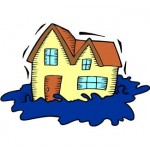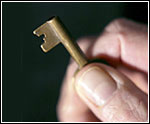Should I Buy a Generator?
Wednesday, January 8th, 2014Residents of Spruce Grove, Stony Plain, Parkland County and the Edmonton area shuddered in horror during the last two weeks of December 2013 as ice storms in eastern Canada caused power outages that left people shivering in the dark, not for hours, but for days. No power meant no heat, no lights, no way to keep food from spoiling, in many cases no water and no way to cook food. Many of us started thinking about our own dependence on the electric power grid and what we could do if faced with such a disaster.
One solution might be a backup generator run by diesel, gasoline, propane or natural gas that could at least provide power to essential appliances such as furnace, refrigerator, stove or microwave, and the like. What do you need to know before you purchase one and attempt to install it on your property?
What size do I need?
When it comes to generators, especially those that can run multiple appliances, bigger is better. Experts suggest anything smaller than 4500 to 6000 watts just won’t get the job done.
First, determine what items you want to run. Be aware that a generator is not intended to run every electrical appliance in your home and certainly not at the same time, so some choices will need to be made. Most people would put things like the furnace, fridge, freezer and stove at the top of their lists. Add your hot water tank if it is electric, and anything else that would cause undue hardship if you had to live without it for a few days.
You need to know how many watts of power are required to run your chosen items, but even more important is the “start-up wattage” – how much power is required when the item is turned on. For example, a refrigerator might need 800 watts to run, but 2500 watts to start. A good chart listing the wattages for selected home appliances is published by Plano Power Equipment. Many appliances in your home should also have this information printed on them.
Add up the amount of wattage needed for all the items you want to run (don’t forget the lights!), and add 25% more to account for error and also to keep the generator running below its maximum capacity.
Remember too that most of these machines, like your vehicle or lawnmower, run on fuel in tanks that have to be re-filled! Average continuous running time is about 5 to 7 hours.
How do I manage the power?
One thing to remember: Turn something OFF before you turn something else ON!
A very good article called “Power On” published by GulfCoastNews.com has some great tips for choosing, operating and installing a portable generator.
The author of this article recommends turning on the refrigerator and freezer first, then a few lights and other low-wattage appliances. Once everything in the freezer is frozen, unplugging it for a while won’t hurt the contents and you can then run other appliances and equipment.
So, can I just plug in the generator?
Uh, no. What you’re going to need is a “transfer switch”. The “Power On” article defines a transfer switch as “a manual three-position switching device that allows power to be channeled to the home’s electrical system either from the utility company power lines or from the generator – not both”. Why is this important? “Plugging a generator directly into a wall socket instead of utilizing a transfer switch sets up several potentially deadly scenarios: a short-circuit and electrical fire in the home’s wiring when power is restored; a system short-circuit in the generator causing it to catch fire or explode when power is restored; and the possible electrocution of linemen working to restore power in your area.” Yikes!
Here’s a good idea, from the same article: “If you are building a new home [or renovating], consider having the contractor install a sub-panel that is already set up for stand-by power. This saves you money because there’s usually no additional installation labor costs and the generator-ready panel eliminates the need for an additional transfer switch box.”
See also “Portable Generator Safety” from FortisAlberta.
How do I go about installing my portable or stand-by generator?
Take a look at this video called “How to Install a Stand-by Generator” from ThisOldHouse.com. A little more complicated than buying the thing, bringing it home and turning it on, but chances are, if you ever have to deal with what the poor folks in eastern Canada did, you’ll be very glad you made the effort!
OK, I’m sold! What do I buy and how much will it cost?
Home Depot has a good article on generators on their website, along with links to information on the generators they sell. Check out also this page from ConsumerReports.org. If you are a subscriber, you will be able to access the Consumer Reports ratings on generators.
Personal opinion? If you’re going to do this, go for the best. For example, Honda’s Premium series of generators (5000 to 6000 watts) cost in the range of $3000. (View the spec sheets from Scona Cycle.) Add in roughly another $750 for installing the transfer switch and incidentals and you will be good to go even if the Edmonton area gets hit with a 2-week-long power outage like Ontario’s.
Comments or questions about this article? Call or text me at 780-910-9669, email me at barry@barryt.ca, or contact me here.











